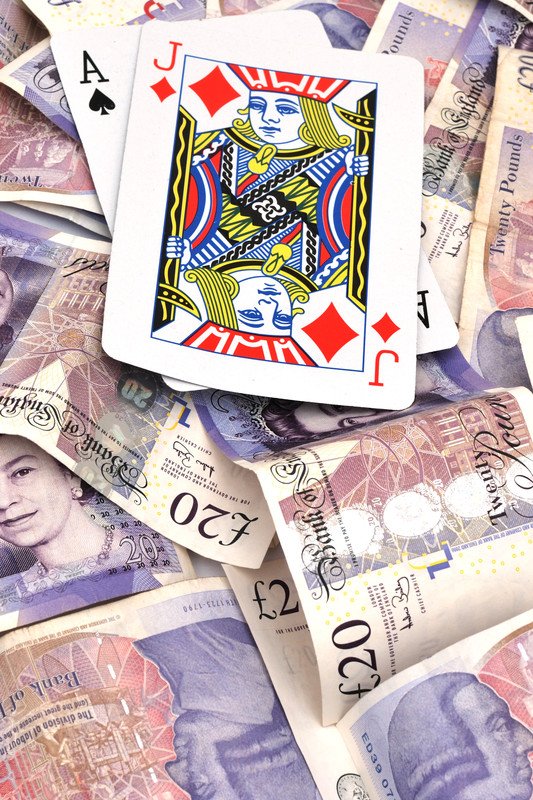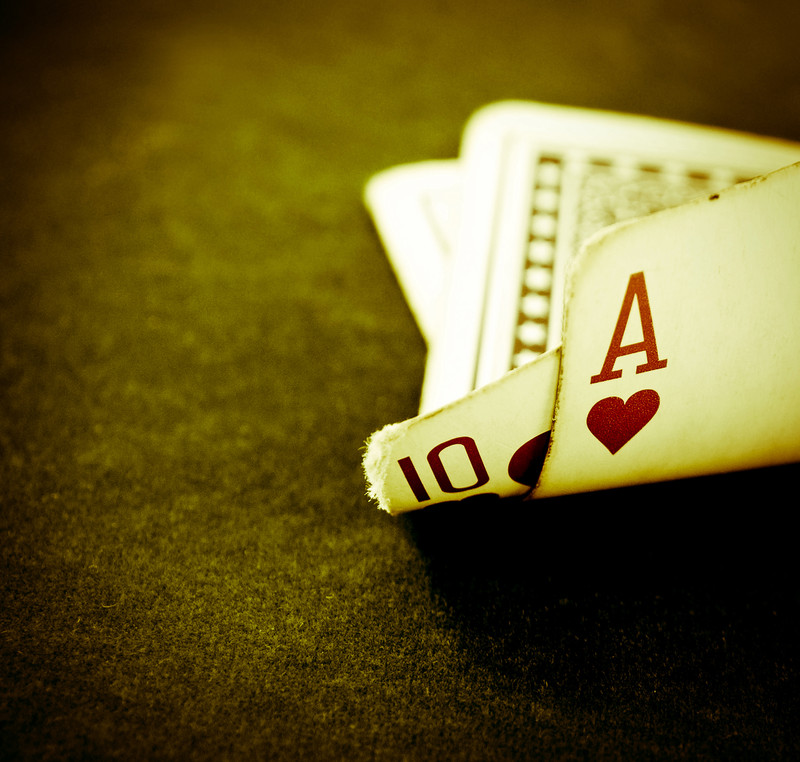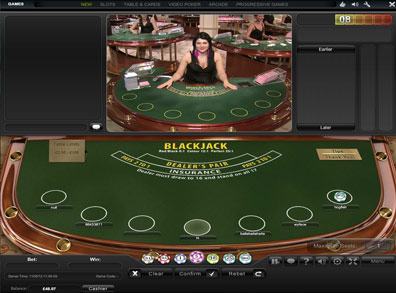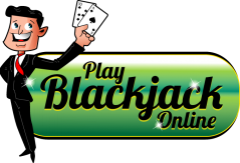Know Your Strategy
1. It may be the 0.5% house edge (0.4% according to some) that attracts many to the tables, but you won’t get an edge that low unless you’re playing optimum strategy. Indeed, play poorly, and the edge could easily go out to 4 or 5%. So test yourself again and again and again until you’re sure what to do in almost every situation. Look for simulators that can train you to play optimum strategy. If you have a smartphone or tablet, for instance, you might want to consider Blackjack MH (Apple) or BlackJack 21 (Android).
2. We’re going to reiterate this point, because it’s so important. Know your strategy and know it very well. Successfully playing a casino game for long periods is as much a test of nerves as anything. If you’re not totally on top of your strategy before you start playing, you’re going to make some big miscalculations once the pressure is truly on.
Correct Strategy
 3. So what is correct strategy? Your actions should be decided partly on what the dealer has. If they draw a lower card (6 and below), there’s a much higher chance that they’ll go bust trying to get to 17. The 5 is the most dangerous card from the dealer’s point of view, as there’s a 43% chance they’ll go bust if they start by drawing this card, and a 42% chance in the case of the 6. These figures fall to 35%, 38% and 40% for the 2, 3 and 4 respectively. If the dealer has a 6 or lower, you can stand on a relatively modest hand of 12 or 13, as there’s a good chance of the dealer going bust.
3. So what is correct strategy? Your actions should be decided partly on what the dealer has. If they draw a lower card (6 and below), there’s a much higher chance that they’ll go bust trying to get to 17. The 5 is the most dangerous card from the dealer’s point of view, as there’s a 43% chance they’ll go bust if they start by drawing this card, and a 42% chance in the case of the 6. These figures fall to 35%, 38% and 40% for the 2, 3 and 4 respectively. If the dealer has a 6 or lower, you can stand on a relatively modest hand of 12 or 13, as there’s a good chance of the dealer going bust.
4. Don’t fall into the fuzzy thinking that says that 15 or 16 is a better score than 12 or 13. The dealer must generally reach 17, or go bust trying. Therefore, if you have less than 17, your only chance of winning is for the dealer to go bust – given this, it makes little difference whether you have 12 or 16. In fact, because the lower scores carry a reduced chance of the player going bust, 16 is actually the most dangerous hand of all – it offers less of a chance of producing a strong winning total, yet comes with a high risk that the player will go bust trying to improve on it.
5. The difference between the dealer getting 6 and the dealer getting 7 is enormous. That’s because the dealer goes bust 42% of the time when they have a 6, but just 26% of the time when they have a 7. The 7 gives them a vastly improved chance of scoring a winning total. With a 10, the chance of going bust falls only slightly – to 24%. However, the Ace is the safest choice of all – there’s just a 17% chance of going bust with this one. Hence, you need to be more aggressive in hitting when the dealer has a 7 or higher, and much more aggressive when they have an Ace.
6. Winning is about far more than getting the highest hand. Most people could accurately predict that 21 and 20 are the two best hands in the game. However, most would go on to assume that the third best hand would be 19, the fourth best hand 18 etc. In fact, 11 gives you the third best chances of winning. That’s because 11 can very safely be hit without a chance of going bust. And yet, you have a 30.8% chance (if playing with eight decks) of turning that 11 into 21 with just one more card. You have a 46.2% chance (virtually the flip of a coin) of scoring a 19 or higher. 11 may not seem like much, but it has every chance of fuelling you on to better things.
7. The dealer’s average hand is slightly above 18, so the player will frequently need to get 19 or more in order to have a good chance of winning. If you’re having to play aggressively, you need to be hitting at least until you’ve reached 17 or a soft 18 (A7, for instance).
8. If you’re in two minds as to how to react to the dealer’s card, assume that their second is going to be worth 10, and play accordingly. There’s a 30.8% chance that they’ll draw a card worth 10, so this way of thinking should give you a fair guide.
9. The dealer always goes last. The knowledge of what has gone before means that the dealer has an inbuilt advantage – winning 48% of the time rather than, in the case of players, 44%. Again, this signifies that you’ll have to hit hard if you’re to be aggressive. It also suggests that it’s a poor move to simply mimic the dealer’s plays – if you’re to get close to eroding the house edge, you need to make use of the additional bets open to the player, rather than simply copying the dealer’s strategy.
Optional Plays
10. Double Down is a great little tool, but it does need to be played strategically. It amounts to the chance to double up when you think you have a good hand. However, if you lose on Double Down, you could end up throwing away twice as much as you would have done if playing normally. So you should only play it when the odds are genuinely in your favour. Effectively, this restricts you to times when you have an A6 or A7, or a hand that’s worth between 9 and 11, and the dealer has a 6 or lower. If you have a hand of 11, you can allow the dealer as much as 8.
11. Splitting is another invaluable tool that needs to be utilised to get the house edge down as low as 0.5%. There’s no need to split 9s or 10s, as they’ll be good enough already to secure you a win. You should, though, always split 7s, 8s, and Aces. Don’t split 2s, 3s, 4s, 5s, or 6s, as these are low and, therefore, can usually be safely drawn again on.
12. Insurance is a poor bet, so always avoid it. The dealer turns up an ace, and the player is given the option of betting as much as half of the original bet as ‘insurance’. If the dealer then turns up a card with a value of 10, and gets blackjack, the player loses their original bet, but wins on the ‘insurance’ bet at odds of 2:1. Effectively, then, the player will break even as a result of the insurance bet. However, since there’s only a 30.8% chance that the dealer will draw a blackjack, this turns out to be a poor bet over the long term. Quite simply, don’t bother with insurance.
The Importance of Blackjacks and Other Rule-Changes
 13. In many respects, the house has a significant advantage. But perhaps the most crucial element in reducing that edge is the bonuses given to players when they draw blackjacks. When a player turns up a blackjack (two opening cards worth 21 collectively), they should be rewarded with a 3:2 payout. This is a crucial component of the low house edge. Some casinos, though, will try and get away with offering a payout of just 6:5, or even 1:1.. Limiting these payouts can result in the house edge going up by 1.4-2.3%. The blackjack bonus is your chance to hit back, so don’t play at any table that offers a payout of less than 3:2.
13. In many respects, the house has a significant advantage. But perhaps the most crucial element in reducing that edge is the bonuses given to players when they draw blackjacks. When a player turns up a blackjack (two opening cards worth 21 collectively), they should be rewarded with a 3:2 payout. This is a crucial component of the low house edge. Some casinos, though, will try and get away with offering a payout of just 6:5, or even 1:1.. Limiting these payouts can result in the house edge going up by 1.4-2.3%. The blackjack bonus is your chance to hit back, so don’t play at any table that offers a payout of less than 3:2.
14. The higher payouts for blackjacks are also key to players having more of a chance when the game is using fewer decks. If you’re playing with a single deck, and you pick out an Ace, there are 16 of the remaining 51 cards left that can make that ace up to a blackjack hand. That’s a 31.4% chance of success. If you play with eight decks, on the other hand, you’ll be left with 128 cards out of a remaining 415, which amounts to a chance of just 30.8%. (You see a similar drop when looking at the chances of drawing an ace to add to a 10-score card.) That 0.6% drop might not seem hugely significant, but it amounts to a reduction in the house edge of very close to 0.5% – essentially, then, the house would have no edge at all if the player is using optimum strategy.
15. Don’t automatically assume that single-deck games are advantageous to you. The house will often try to con players by dangling a single-deck game in front of them, while implementing other rules that more than make up for that almost-0.5% reduction in their edge. In particular, avoid the increasingly popular variation known as Single Deck Blackjack 6 to 5. This cuts your blackjack bonus to just 6:5, a move that increases the house edge by around 1.4% – no wonder they can afford to give you almost 0.5% back by cutting the number of decks!
16. Other rule changes to look out for include splitting to only 2 or 3 hands (which can increase the edge by 0.01 to 0.1%), and restrictions on when to double (which can amount to as much as a 0.2% rise in the edge). One very simple rule to look out for is the one that insists a dealer must stand on
17. Some tables will allow the dealer to hit if they have a soft 17 (an Ace along with a set of cards adding up to 6). Giving the dealer the chance to hit on a soft 17 gives more than 0.2% to the house. Indeed, if a table offers you a single deck game with a full blackjack payout and a rule forcing the dealer to always stand on 17, it’s conceivable that a player using an optimum strategy might have a marginal edge here – even if you don’t engage in any kind of card counting.
Sensible Betting

In a follow-up to that, heck that you’re not going to be increasing your nerves by risking too much. The maximum bet should never be higher than 5% of your bank. For many players, a smaller figure still will be advisable. If you find yourself tensing up or feeling even slightly uneasy when you place a bet, you’re almost certainly risking too much. Find an amount that you’re always comfortable with.
18. Try and have only a portion of your bank in play at one time. This way, when you have a bad run of cards and have to refund, it’ll give you a small pause in which to collect yourself before playing on.
19. If you’re not in the right frame of mind, don’t bet. Blackjack is very much a game of skill, and if you’re not thinking clearly, you’re likely to make some poor plays.
20. Stay away from progressive betting systems – doubling your bet after every loss etc. These systems rarely have any validity, and often have unseen pitfalls that will result in you losing large amounts of your bank with one unlucky run – even long losing runs will occur from time to time if you’re a serious player, so make these difficult periods any harder than they need to be by compounding bad luck with kamikaze betting. If you can’t get success with flat betting, a progressive system is unlikely to help you in the long term.
